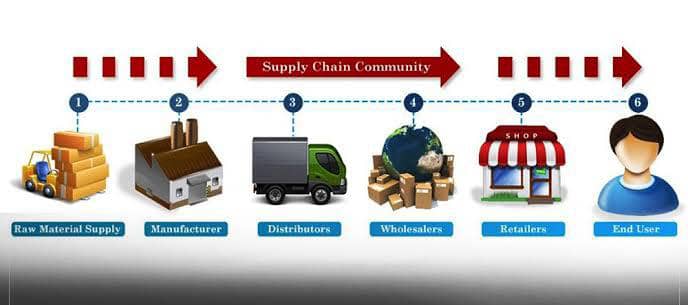Supply chain visibility refers to the end-to-end ability of an organization to track and monitor all aspects of its supply chain operations—from raw material sourcing and production to distribution and delivery to the end customer. It involves having real-time access to data about inventory levels, shipment status, order fulfillment, and other critical supply chain metrics. This visibility enables companies to identify potential issues, optimize operations, and respond quickly to disruptions, thereby enhancing overall efficiency and customer satisfaction.

KEY COMPONENTS OF SUUPPLY CHAIN VISIBILITY.
1.Real-Time Tracking: Monitoring the movement of goods, materials, and products throughout the supply chain.
2.Data Integration: Consolidating data from various sources such as suppliers, logistics providers, and internal systems.
3.Predictive Analytics: Using historical and real-time data to forecast demand and preempt potential bottlenecks.
4.Risk Management: Quickly identifying and mitigating risks like delays, shortages, or quality issues.
5. Collaboration and communication: Ability to share information and collaborate with suppliers, manufacturers, logistics providers, and other stakeholders.

BENEFITS OF SUPPLY CHAIN VISIBILITY.
1. Improved efficiency: Real-time tracking and monitoring enable faster decision-making and reduced lead times.
2. Increased accuracy: Data-driven insights reduce errors and improve forecasting.
3. Enhanced customer satisfaction: Faster and more accurate deliveries lead to higher customer satisfaction.
4. Reduced costs: Improved visibility enables optimization of inventory levels, transportation, and other supply chain costs.
5. Better risk management: Real-time monitoring enables proactive identification and mitigation of potential disruptions.

TECHNOLOGIES ENABLING SUPPLY CHAINS VISIBILITY.
1. Internet of Things (IoT): Sensors and devices that track shipments and inventory.
2. Blockchain: Distributed ledger technology that enables secure and transparent tracking.
3. Cloud-based platforms: Software-as-a-Service (SaaS) solutions that provide real-time visibility and analytics.
4. Artificial Intelligence (AI): Machine learning algorithms that analyze data and provide predictive insights.
5. Global Trade Item Number (GTIN): Unique identifiers for products that enable tracking and tracing.

SUMMARY.
Supply chain visibility is the capability to monitor and track every stage of a supply chain in real time—from raw material sourcing to product delivery. It involves gathering data from various sources to enhance operational efficiency, predict demand, manage risks, and respond quickly to issues.